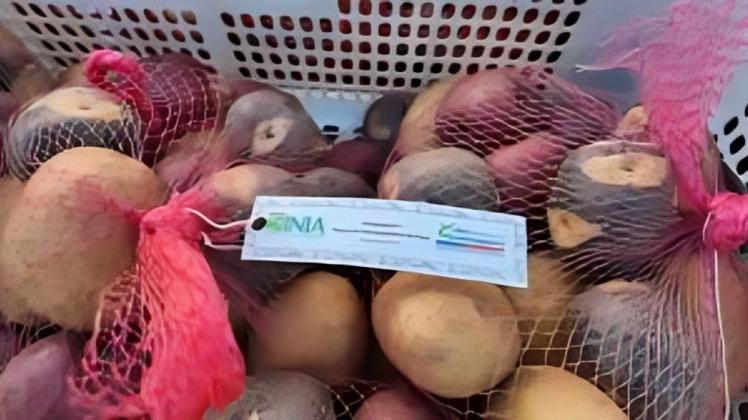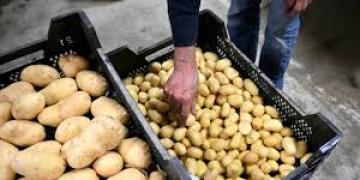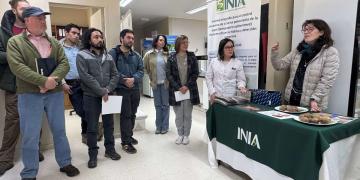Chile: INIA inauguró Banco de Germoplasma de la Papa en Osorno
Este nuevo banco forma parte de la Red de Bancos de Germoplasma de INIA y permitirá conservar, con altos estándares científicos, las variedades nativas y tradicionales de papa que forman parte del patrimonio agrícola y cultural del sur de Chile.

In celebration of International Potato Day, the Agricultural Research Institute (INIA) inaugurated the Potato Germplasm Bank in the Los Lagos Region. This facility will aim to preserve the diversity of native and traditional varieties of this important crop in the country.
This infrastructure, developed with the support of the Ministry of Science, Technology, Knowledge, and Innovation, and in collaboration with the International Potato Center (CIP), will strengthen INIA’s work by bringing cryopreservation techniques to the country for the long-term conservation of this tuber.
The event was attended by INIA Chile’s national director, Carlos Furche; the presidential delegate of Osorno Province, Claudia Pailalef; former INIA national directors Julio Kalazich and Iris Lobos; and key players in the regional agricultural sector.
For Carlos Furche, "This event we held today, the day of the inauguration of the Potato Germplasm Bank, is important in several ways; it is certainly important because it aims to contribute to preserving the genetic heritage of the potato, a crop that is essential to our diet. It is traditional and also has cultural ties, particularly to the southern regions of Chile."
"INIA is formally the curator of our country’s plant genetic resources, and this is the type of activity and action in which INIA is absolutely irreplaceable. Either INIA does this, or no one in our country does it," he emphasized.
He also reported that INIA has "five active germplasm banks in different regions of Chile; we have a base bank in the Coquimbo Region near Vicuña, and I hope that in the coming years we can inaugurate the first bank of genetic and zoogenetic resources, and that we can set the stage for the future construction of a genetic resources bank for Patagonia."
The presidential delegate of Osorno Province, Claudia Pailalef, also highlighted the importance of this newly opened bank. "On behalf of President Gabriel Boric’s government, we are very pleased and grateful for the work that INIA is currently doing here in the province of Osorno, and in the case of this germplasm bank, which will allow us to conserve genetic material from various potato varieties from the Los Lagos Region and other regions of the country," she stated.
He added that “the potato, as we all know, is a very important species for the economy of families, but it also generates a significant impact on the development of agriculture in all its expressions here in the region” and in that sense he thanked the work and commitment of all the officials who have made their careers in this beautiful institution and in a very special way a message of recognition to those who departed today: Dr. José Santos Rojas, founder of INIA La Pampa and the agricultural engineer Sandra Orena Alvarado, who was the first deputy director of the experimental center of this department.”
Boosting the crop
In Chile, around 250 potato varieties belonging to the Solanum tuberosum L. species have been officially described. The Los Lagos Region has the largest potato production in the country, with an annual output of between 250,000 and 450,000 tons, making it a traditional crop in the region.
Sandra Alva, head of INIA’s Potato Germplasm Bank, emphasized that "this bank offers various conservation methods, and the longest-term method can allow for the preservation, through cryopreservation, of potato genetic resources for 100 years so that future generations can access this material." Currently, INIA Remehue houses a collection of more than 450 native potato accessions, which will migrate to the new facilities.
For his part, Arturo Carrillo, potato producer and vice president of the Chilean Potato Association (ACHIPA), said, "The INIA is extremely important at the national level, especially for the production of high-quality, healthy seeds. This modernization is excellent for producing higher-quality material, which will lead to increased production in the future."
Press Contact
Gabriela Varas G., National Head of Communications, INIA / gabriela.varas@inia.cl / +569 99186332
Fuente: INIA Chile




